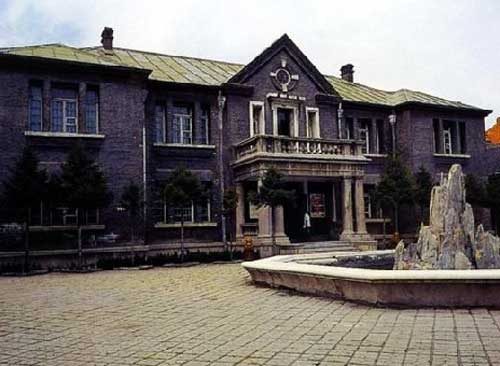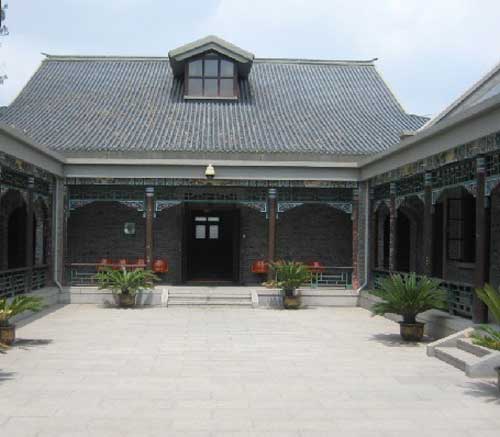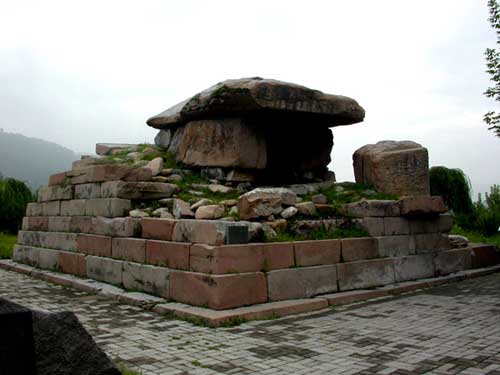

The Puppet Manchurian Palace
Emperor History, Skimming over the Surface
Indelible History and Unforgettable Memory
The award-winning Hollywood blockbuster the Last Emperor lets the world know a more humane Aisin-Gioro Puyi. The legend life of Aisin-Gioro Puyi is an indelible part of the Chinese history. He succeeded to the throne at three years old, was driven away from the throne at 19 years old, and later was jailed by the Soviet Red Army. Interestingly, thanks to excellent treatment, Aisin-Gioro Puyi ever submitted written statements to the Soviet Red Army to show his will for permanent residence in Soviet Union. After the establishment of New China, Aisin-Gioro Puyi became a civilian after reconstruction and was the only emperor changing to a civilian in the Chinese history. The divorce with her two wives made him become the only emperor “cast off” by wives. We can say, in the absurd and uncanny life of Aisin-Gioro Puyi, the final “brilliance” of him was left in the Puppet Manchurian Palace. Among all palace old locations in China, the Puppet Manchurian Palace is the most special one because of its complex historical background, multi-cultural connotation, unique nature, scarce cultural resources, and global and unique nature, which can be summed up in four words “unique, vigilant, mysterious, and scare”.
Unique: The architectural style of the Puppet Manchurian Palace is unique as it is a Sino-foreign style, in which both Chinese and Japanese styles co-exist. Such an architectural style features the palace to be unique among all palaces in China and shows typical colonial characteristics.
Vigilant: After the “9.18”event, under the support by Japanese, Aisin-Gioro Puyi has started 13-year puppet regime since 1934. The palace was divided into external court and internal court. The external court specialized in political activities, and the main buildings included Qinmin Building, Huaiyuan Building, and Jiale Building. Qinmin Buiding was the office hall for Aisin-Gioro Puyi and now is divided into Puppet Manchurian Palace Gallery and Puppet Manchurian Emperor Gallery. Here, Aisin-Gioro Puyi issued “the most sordid edict in history” –“Returned Emperor’s Rescript to Teach Civilians”. At the Qinmin Building containing meaning “work diligently and love people”, Aisin-Gioro Puyi signed “the Japan Manchuguo Protocol” that he accepted, submissively ceding the sovereignty of Northeast China to Japan. Aisin-Gioro Puyi, as a spokesman of Japan, conducted a series of reactionary ruling, making people suffer unspeakably and live on the edge of starvation.
Mysterious: The puppet regime of external court humiliated the nation and forfeited the sovereignty. Disputes of the internal court continued ceaselessly. Imperial concubines of the emperor fought with open and secret means to scramble for favor from the emperor. Many anecdotes ever occurred in the palace that was full of atmosphere to the end of the regime. An exhibit hall that specializes in display of original states, basic displays, and theme displays reproduces the dissolute, extravagant, dissipated, wasteful, and empty life for the imperial harem and gives rise to an infinite reflection and reverie.
Scare: The Puppet Manchurian Palace, one of the first national grade AAAA tourist attractions, is an important evidence for tourists to understand, review, and mourn for the history as well as an important place for many chronicle plays to find a view. Following the Last Emperor, the teleplay “Brave the Journey to the Northeast II” also found a view at the Puppet Manchurian Palace, of which Qinmin Building and Tongde Hall are redisplayed via lens.
Secret Experience: Emperor History and Anecdotes


Longwanqun National Forest Park
Longwanqun National Forest Park is located in the middle of Longgang range in the western part of Changbai Mountain within Huinan County, Jilin Province. With an average altitude of 880 meters and taking up 8,102 hectares, the park was agreed by the State Forestry Department to establish in 1992. As a national grade AAA tourist attraction and a national science base, it gained the certification of the ISO9000 quality management system and ISO14000 environmental management system early or later in 2005. The park has many cater lakes which are famous for their complicated topography and the unusual landform. The attraction is made up of 10 scenic spots: Dalong Bay, Erlong Bay, Sanjiaolong Bay, Xiaolong Bay, Donglong Bay, Nanlong Bay, Hanlong Bay, Jinlongdingzi (golden dragon hill), Sifangdingzi (square hill) and Diaoshuihu Waterfall. Longwan (dragon bay) is a low-and flat-lying crater formed by explosive volcanic eruptions of basaltic in ancient geological times and is called Maar Lake by geologists. About from the early Pleistocene to early Middle Pleistocene, volcanic activities in the region were frequent and intense, forming the unique Longgang volcanic mountain terrain and numerous crater lakes and volcanic cones, which are bestowed tourism resources of the park. The Longwanqun National Forest Park has obvious seasonal characteristics: in spring, flowers bloom like a piece of brocade and wild azaleas are especially gorgeous; in summer, the Diaoshuihu Waterfall is nice and cool; in autumn, maple trees in the mountain are red and breathtaking; in winter there is rime wonder. It is described as “appreciating various beautiful flowers in summer and moon in autumn, and enjoying cool breeze in summer and listening to snow in winter”. The main sight of the park is ecological landscape of forest. Crater lakes and volcanic cones are the framework, flowing springs and waterfalls are the vein, and cultural buildings are dotted, which constitutes a unique and vivid picture harmonizing static and dynamic landscapes and integrating natural and cultural landscapes. It is a place endowed with the fine spirits, in which mountains range one higher than other, lakes and mountains are quiet and marvelous, ravine streams are clear and green, and rare rocks are extraordinary as if done by the spirits. Wonderful and unique scenes are essence of the world sights to make people feel the blend of fire and water and appreciate enthusiasm of passion and sight.

Koguryo Cultural Relics is located in Ji’an City. On the plains surrounding Ji’an, there were more than 10,000 tombs in the Koguryo times. They are so--called “Ji’an tomb group” that is well-known at home and abroad, of which Haotaiwang Stele, General’s Tomb, and Qianqiu Mausoleum (Thousand-Year Mausoleum) have grand scales. General’s Tomb is called the oriental pyramid as each side of the tomb foundation is 31.58 meters long and 12.4 meters high. The body of the tomb is like a square taper and has a total of seven steps, all of which are built with fine-carved giant granites. The roof is covered by a complete giant stone. The tomb building is magnificent, solemn and lively. General’s Tomb is a masterpiece of architectural art in the Koguryo times. Many vaults are still well preserved to be colorful and streaming and have rich contents and tomb murals possessing legendary myth.